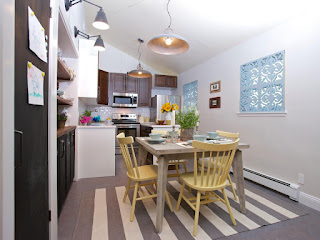How To Paint A Kitchen Table And Chairs | Wooden | Dining Table | Chairs | Sanding | Without Sanding
Painting A Kitchen Or Dining Table And Chairs
Do you want to update the style of your kitchen table and chairs? Painting is a great approach to accomplish a fashionable transition, whether your goal is to give your furniture a modern makeover or are just looking to breathe new life into worn-out pieces. The finest aspect? Sanding or not will rely on your taste and the state of your furniture when you complete this project. We'll take you step-by-step through both procedures in this article to make sure you always get results that seem professional.
Preparation
Assemble the required supplies and set up your workspace before beginning the painting process.
- Setting Up Your Workspace: Pick a well-ventilated location, ideally outside or in a well-ventilated room. Put old sheets or a drop cloth down to shield the floor from paint splatters.
- Materials: Assemble your painting tools, such as rollers or paintbrushes, primer, paint, painter's tape, sandpaper (if needed), and a fresh cloth to wipe surfaces.
Painting with Sanding
- Step 1: Sanding
Start by sanding the table and chair surfaces with fine-grit (120–220 grit) sandpaper. In order to improve paint adherence, this step gently roughens the surface and helps to level out any irregularities. For best effects, make sure you sand in the direction of the wood grain.
- Step 2: Cleaning
After sanding the furniture, give the surfaces a thorough cleaning to get rid of any dust and debris. For this process, a damp cloth works well and leaves a clean painting surface.
- Step 3: Priming
Using a paintbrush or roller, coat the sanded areas with primer. In addition to providing a flat surface for paint to stick on, primer aids in sealing the wood. Before moving on to the following step, let the primer completely dry.
- Step 4: Apply Paint
It's time to apply the paint colour of your choice when the primer has dried. For a polished finish, use even strokes with a paintbrush or roller, working in the direction of the wood grain. You might need to apply several coats, waiting for each coat to completely dry before applying the next, depending on the coverage you want.
- Step 5: Concluding Details
Examine the furniture for any uneven or missed places after the last layer of paint has dried. After making any necessary touch-ups, let the paint dry fully before utilising the table and chairs.
Painting without Sanding
- Step 1: Cleaning
To start, use a moist cloth to wipe down the table and chair surfaces to get rid of any dirt or grime. Let the surfaces air dry thoroughly before moving forward.
- Step 2: Priming
Using a paintbrush or roller, apply the clean surfaces with bonding primer. Bonding primer is made especially to stick to glossy or challenging-to-paint surfaces without requiring sanding. In accordance with the manufacturer's directions, let the primer dry.
- Step 3: Applying paint
After the primer has cured, you can paint the furniture following Method 1's instructions. Paint in even coats, letting each one dry completely before adding a new one.
- Step 4: Concluding Details
Look for any touch-ups or uneven places on the furniture after the last layer of paint has dried. When you're happy with the outcome, let the paint dry fully before utilising the table and chairs.
Success Advice
- Select premium paint and primer to achieve durable outcomes.
- For a flawless finish, take your time and apply thin, even layers of paint.
- To guard against wear and tear on painted surfaces, think about applying a topcoat or sealer.
- Try a variety of paint colours and finishes to get the look you want.
With ease, you can paint your kitchen table and chairs—with or without sanding—by following these detailed steps, turning them into eye-catching focus points for your room. Regardless of your preference for a conventional or modern look, this inexpensive do-it-yourself project will look great. So prepare to release your imagination by rolling up your sleeves and gathering your materials!
What type of paint is best for kitchen tables and chairs?
A kitchen table and chairs will probably get spills, splatters, and regular use, so you'll want paint that is long-lasting and clean-up-friendly. Here are several possibilities:
- Oil-based paint
Offers a stain- and water-resistant finish that is resilient to repeated cleaning. On the other hand, oil-based paints take longer to cure and release significant fumes when applied.
- Acrylic or latex paint
Oil-based paints take longer to dry, have more smells, and are more difficult to work with than water-based paints like acrylic or latex. Seek out those with the labels "high-gloss" or "enamel" for added durability.
- Chalk paint
Known for its simplicity of application and little prep work requirements, chalk paint can produce a vintage, matte surface. It would require a sealer for further protection, though, and it might not be as resilient as other solutions.
- Spray paint
Perfect for hiding fine details on chairs, spray paint may provide an even, smooth surface. Seek out furniture-specific spray paints and select one with a long-lasting finish.
Regardless of the paint type you use, be sure to thoroughly clean and sand the surface before painting. For added protection, think about sealing the wood with a clear topcoat, especially if the kitchen table and chairs will be used frequently.




Comments
Post a Comment